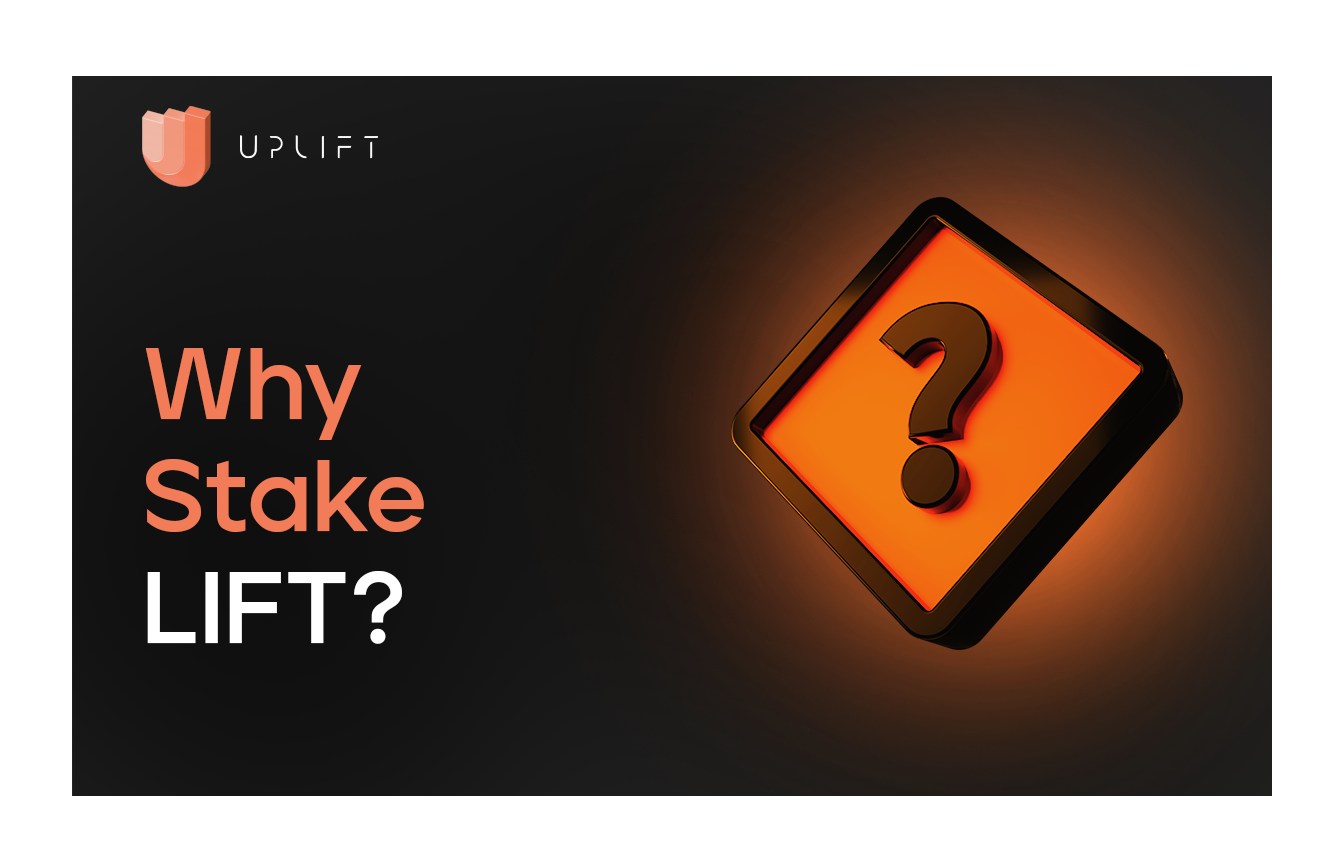“Don’t work for money. Put your money to work for you,” they say.
But how?
In the crypto world, there are multiple ways you can generate passive income. The most popular one is, obviously, staking.
In this article, we walk you through the basics of staking and how you can get started. Let’s jump in.
What is staking?
Simply put, staking is a way of generating rewards on your cryptocurrencies.
As the term denotes, here your cryptocurrencies act as collateral. They are locked up in a network or protocol to serve a specific purpose for the ecosystem while accumulating rewards for you over time.
In the earlier days, it referred to helping secure a particular blockchain network or a smart contract protocol that runs on the Proof-of-Stake consensus mechanism. Instead of all miners churning through complex math problems, Proof-of-Stake transactions are validated by only a few.
And how do they qualify for that? By staking cryptocurrencies. You are incentivized to validate the blocks through block rewards and transaction fees. Also, a certain portion of your staked tokens will be burned if your transactions turn out to be invalid.
Indeed, staking facilitates the smooth functioning of a blockchain network. However, blockchain staking is not for everyone. You need a minimum amount of cryptocurrency (which can be quite hefty in most cases), deep technical knowledge, and an efficient computer that can smash through the validations to get started. It is anything but passive for a newb.
Don’t let that dispirit you though. The term ‘staking’ has evolved over time to accommodate a range of passive income streams. Even if you can’t directly participate in PoS staking, you can join staking pools hosted by platforms like Binance and Coinbase.
Staking is a common passive stream of income in DeFi ecosystems as well, although it has little to do with block validation. What does ‘staking’ mean in this context? Let’s take a look.
DeFi staking
In DeFi staking, you lock up your tokens in a protocol to help facilitate a specific goal for the ecosystem. The purpose of staking can vary from protocol to protocol.
For example, DeFi lending protocols like Aave use staked tokens as a backup fund against unforeseen events. It nurtures confidence and security in the protocol, while also incentivizing stakers for their participation.
On DEXs like Curve, staking gives governance rights in addition to rewards. Users stake their Curve DAO Tokens (CRV) to receive voting escrow CRV (veCRV), which gives them a say in various decisions. They can vote on governance proposals, determine the CRV yield of different liquidity pools, and generate passive income from trading fees.
Staking can also act as collateral for the creation of other assets. For example, on derivatives liquidity protocol Synthetix, you stake your SNX tokens to mint synthetic assets called Synths. The protocol incentivizes stakers by giving staking rewards and a portion of trading fees generated on dApps that use the Synthetix protocol.
As you can see, the use cases for staking have broadened over time. DeFi protocols use staking as a means to secure the platform, bootstrap liquidity, mint new assets, and facilitate governance.
UpLift DAO takes it a notch up to bring lucrative investment opportunities to retail investors.
Why stake LIFT?
UpLift DAO is a decentralized fundraising platform that bridges the gap between emerging crypto projects and retail investors. The platform makes early-stage investment opportunities in promising start-ups possible for anyone through a dedicated IDO launchpad.
The lottery-based token allocation model on UpLift prevents whales from taking over IDOs. Moreover, the platform’s diligent screening process overseen by industry experts ensures that only efficient projects get listed.
LIFT is the native token of the UpLift ecosystem. Staking LIFT, users can join the ecosystem to serve its various missions and generate staking yield rewards with a high APR.
There are three major benefits to staking LIFT tokens on UpLift:
1. Staking gives you access to exclusive IDO rounds hosted on the launchpad. Although token allocations are largely lottery-based, ‘Staking Power’ earns you more lottery entries, which in turn can increase your chances of allocation.
2. UpLift gives voting rights to users based on the amount of LIFT staked. Stakers can vote on a range of proposals that concern project listings on the decentralized voting platform Snapshot.
3. Staking LIFT signals your affinity with the most disruptive projects in the crypto space.
Staking Power and Boosters
UpLift Boosters are multipliers that can enhance your rewards from staking. The booster percentage is determined based on different factors, such as the number of LIFT tokens staked, the lock-up period, and the referral activities you participate in.
1. Tier booster: This multiplier proportionately increases with the number of LIFT tokens staked.
2. Lockup booster: This reward multiplier changes with the staking duration. The sustainable growth of a DeFi platform is largely dependent on the strength of a community. UpLift incentivizes the long-term holding of LIFT tokens by giving consistent dividends to early supporters of the platform.
3. Referral booster: You can also improve your booster percentage through referrals. This can work both ways. You can refer your friends, family, or followers to UpLift’s staking program for a booster of 5% of each referee’s tier and lockup booster, up to a maximum of 20%.
4. Referee booster: A one-time 1% reward for using a referral link to join.
Staking Power, on the other hand, allows for participation in the upcoming IDOs on UpLift launchpad. It starts to accumulate from the moment you lock up your tokens. The minimum lock-up period is 7 days.
After that, you can claim your Staking Power to get allocations in UpLift IDOs. Staking Power is calculated as follows:
LIFT x (100% + Booster) = Staking Power
Thus, if you have 100 LIFT tokens with a 1% booster, your Staking Power will be 101 after 7 days. When you unstake your tokens, your Staking Power is burned.
How to get started
Staking puts your cryptocurrencies to work while you sleep. Since its launch in November 2021, UpLift has proven to be an excellent source of passive income. The project currently has over 7,000 unique stakers.
The staking system on UpLift is designed to reward early supporters and long-term holders. So, start staking LIFT tokens to reap juicy rewards and get access to promising IDOs on UpLift DAO.
Here is a comprehensive guide to help you get started.





